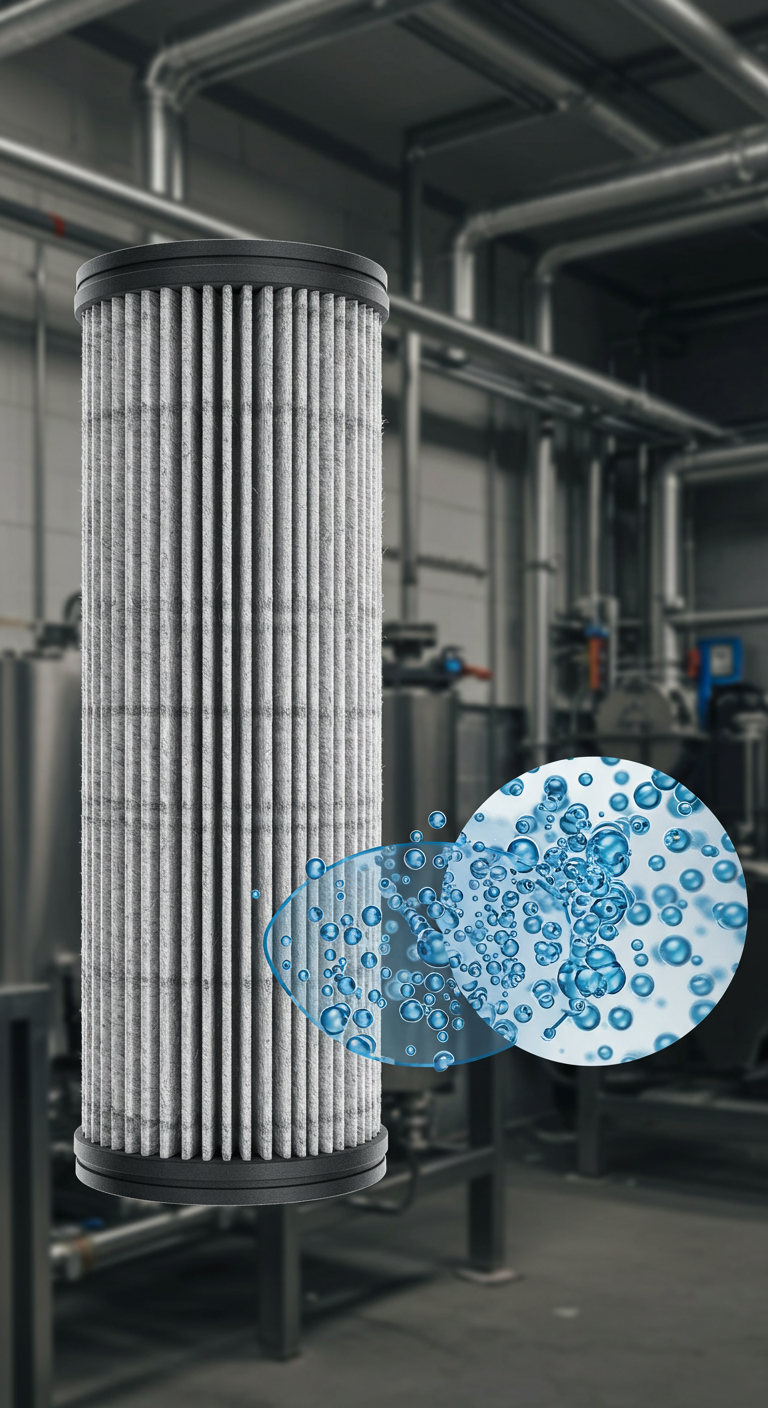Future Trends in Natural Gas Coalescing Filtration Technology
Executive Summary
Coalescing filters are critical in removing fine liquid aerosols and mists from natural gas streams, protecting downstream equipment and ensuring process reliability. As the natural gas sector adapts to rising global demand, tighter environmental standards, and efficiency pressures, coalescing filtration technology is evolving. This paper explores the future trends shaping coalescing filtration—from advanced materials and nanofiber media to smart monitoring, modular designs, and sustainability-driven innovations.
The Current Role of Coalescing Filters
Coalescing filters are an essential downstream component that performs a polishing function by removing liquid aerosols, lubricants, and fine droplets that are too small to be effectively removed by traditional, larger-scale separation equipment like scrubbers or separators.
Their benefits include:
- Protecting compressors, turbines, and metering equipment from erosion and corrosion.
- Extending the life of catalysts and adsorbents in processing units.
- Ensuring compliance with pipeline and LNG export specifications (often <0.1 mg/m³ liquid content).
Emerging Trends in Coalescing Filtration Technology
1. Advanced Filter Media: Nanofiber and Hybrid Materials
Traditional fiberglass and cellulose media are being supplemented or replaced by multi-layer composites where a coarse pre-filter layer provides high dirt/liquid holding capacity, and a subsequent layer of fine nanofibers or microglass fibers ensures high-efficiency removal of sub-micron particles and aerosols.
These offer:
2. Smart Monitoring and IoT Integration
The core of predictive maintenance for coalescing filters is the real-time monitoring of differential pressure, which indicates the filter's saturation level. IoT systems enhance this by automating data collection related to pressure drop, liquid loading, and flow rates in real-time.
Innovations include:
- Predictive maintenance algorithmsto forecast when filters need replacement.
- Cloud-based dashboards linking filtration performance to plant reliability KPIs.
- Trend: Digital monitoring reduces downtime and helps operators shift from reactive to proactive maintenance.
3. Modular, Skid-Mounted Systems
Filtration equipment is increasingly being delivered as pre-assembled skids, supporting LNG mega-projects and modular midstream expansions.
This offers
- Faster installation and commissioning.
- Easier scalability for capacity changes.
- Improved footprint optimization for offshore and floating LNG (FLNG) applications.
- Trend: Modular design will dominate new projects, supporting flexible deployment and lifecycle cost savings.
4. Higher Pressure and Temperature Capabilities
natural gas production shifts toward harsher environments (deepwater, arctic, shale), filters must withstand higher operating pressures and wider temperature ranges.
Innovations include:
- Advanced metallurgy (duplex stainless steels, Inconel).
- Improved sealing materials resistant to cryogenic and sour gas conditions.
- Trend: Next-gen housings and seals will support >200 bar pressures and more aggressive gas compositions.
5. Sustainability and Environmental Compliance
Future coalescing filters will emphasize the ability to reduce VOC HAP emissions by capturing lubricating oil aerosols and other volatile hydrocarbons before they can be released into the atmosphere. Designs are aligned with EPA, EU, and IMO emission frameworks
- Trend: Sustainability will become not just a compliance factor, but a differentiator among suppliers.
6. Integration with Multi-Stage Filtration Systems
Future systems will combine dry particle filtration, coalescing, and polishing filters into a single, optimized train.
Benefits include:
- Comprehensive protection from both solids and liquids.
- Reduced overall footprint.
- Better lifecycle economics.
- Trend: Multi-stage integrated solutions will become the standard for LNG, pipeline, and high-spec midstream applications.
Case Study Insight: Pilot Use of Smart Coalescing Filters
A European LNG regasification terminal tested IoT-enabled coalescing filters. Early results showed:
- 20% reduction in unplanned filter change-outs.
- Improved compressor uptime, with alerts sent directly to maintenance teams.
- Demonstrated ROI within 18 months through reduced downtime and cartridge costs. This reflects the tangible benefits of merging filtration with digital transformation.
What This Means for Operators
For operators of LNG facilities, midstream compressor stations, and processing plants, the future of coalescing filtration means:
- Higher reliability through advanced materials.
- Predictable maintenance via smart monitoring.
- Lower lifecycle costs from modular and integrated systems.
- Sustainability advantages to align with environmental goals.
Conclusion
Coalescing filtration technology is entering a new era, driven by efficiency, digitalization, and sustainability. Investing in advanced coalescing filters will provide measurable economic and operational benefits as gas operators face tighter margins and stricter compliance requirements. The future lies in smarter, stronger, and more sustainable solutions.
